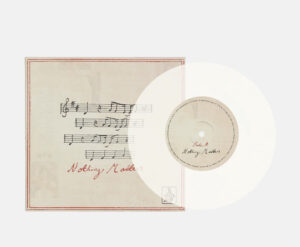Paris, Concrete Dreams, and the Brazilian Pulse
From the intimacy of vintage apothecaries to the intellectual grandeur of architectural manifestos, ABERTO IV emerges as a dialogue between legacy and innovation. Brazil’s revered perfumery Granado, known for preserving the olfactory and botanical heritage of the nation, has joined forces with the Guimarães Rosa Institute and the Institut Français to present the fourth edition of ABERTO—an ongoing exhibition platform where art, space, and cultural identity convene. This year, curator and art consultant Filipé Assis transports the concept to the very sanctum of modernist thought: the Le Corbusier Foundation in Paris.
Held through June 9, 2025, this year’s edition not only breaks geographical borders but also engages in a transhistorical conversation. Forty original works by 25 contemporary Brazilian artists are housed in the former atelier of the Swiss-French architect, reflecting on his imprint upon Brazilian modernism—and how that influence is being reconsidered by a new generation of creatives.
From Rio to Rue Nungesser et Coli: Brazil’s Artistic Reverberation in Modernism’s Shrine
The Le Corbusier Foundation, located at 24 Rue Nungesser et Coli in Paris’s 16th arrondissement, is no ordinary venue. Designed by Le Corbusier and his cousin Pierre Jeanneret in 1934, the Maison La Roche-Jeanneret is part of the architect’s early experiments in spatial purity and chromatic nuance. For ABERTO IV, the building becomes a metaphor—an architectural relic transformed into an active participant in Brazilian cultural self-inquiry.
Filipé Assis’s decision to anchor the exhibition here carries deep symbolism. Brazil, especially during the mid-20th century, served as fertile ground for Le Corbusier’s theories. His visits to Rio de Janeiro in the 1920s and 1930s, and subsequent influence on figures such as Lúcio Costa, Oscar Niemeyer, and Affonso Eduardo Reidy, embedded modernist principles within Brazil’s urban and national identity. Brasília itself is an homage to the tension between form and function—a dream city, and perhaps Le Corbusier’s most abstract offspring.
In this way, ABERTO IV becomes more than an exhibition—it is an architectural séance. Brazilian artists are invited to haunt the architect’s house with their own visions, disruptions, and interpretations.
The Participating Artists: Mapping Contemporary Voices on Concrete Foundations
The selection of artists reflects a broad yet deliberate cross-section of Brazil’s creative vanguard. From rising talents in São Paulo’s independent art circuits to internationally exhibited figures, ABERTO IV invites intergenerational and interdisciplinary reflection.
Among the highlights:
- Virginia de Medeiros presents a video installation that reimagines Brasília’s masterplan through Afro-Brazilian mythologies, offering a spiritual reclamation of a landscape long defined by state power and top-down planning.
- Rodrigo Andrade, known for his painterly interventions on urban surfaces, contributes a suite of thickly impastoed panels mimicking favela textures—a counter-modernism rooted in density and informality.
- Sônia Gomes, fresh from her Venice Biennale debut, suspends textile sculptures across the Maison’s stairwells, recalling both the softness of domestic space and the brutalist gridlines imposed upon the nation’s architecture.
- Eduardo Berliner brings dreamlike, grotesque figures in ink and pastel, a psychological response to the sterile rationality Le Corbusier once espoused.
Each work was created specifically for this edition, reacting to the building, the theme, and the legacy of modernism through Brazil’s unique postcolonial lens. In doing so, the exhibition shifts the narrative from architectural orthodoxy to cultural heterodoxy—from a blueprint to a bricolage.
Granado’s Role: A Sensory Bridge Between Time and Space
Why a perfumery? Granado’s involvement might surprise those unfamiliar with its cultural weight. Founded in 1870 in Rio de Janeiro, Granado has long operated at the intersection of botany, pharmacy, and heritage. Over the past two decades, under the stewardship of Christopher Freeman, the brand has expanded internationally while remaining committed to its roots in Brazilian flora and artisanal formulas.
In ABERTO IV, Granado’s curatorial participation is more than sponsorship—it is sensory contextualization. Upon entering the exhibition, visitors are greeted by olfactory installations derived from the brand’s historic Apothecary collection, customized to evoke the Atlantic Forest, Cerrado, and urban botanical gardens of Rio and São Paulo. This sets a tone: the abstraction of architecture is grounded by scent, memory, and materiality.
Granado has also produced a limited-edition fragrance titled “Concreto Tropical”, available exclusively at the exhibition and select concept stores in Paris. A blend of Brazilian vetiver, white pepper, and concrete accord, the fragrance literalizes the show’s theme: the intersection of natural exuberance and urban formalism.
Institutional Collaboration: Guimarães Rosa Institute and the French Connection
The Guimarães Rosa Institute, named after the famed Brazilian novelist and diplomat João Guimarães Rosa, plays a critical role in translating national identity into cultural diplomacy. Under director Clarissa Motta’s vision, the institute has expanded its programs across Europe, promoting not only literature but also visual art, music, and design. For ABERTO IV, the institute’s partnership with the Institut Français bridges linguistic and aesthetic exchanges, ensuring the show is not perceived as cultural export but rather as cultural cohabitation.
The Institut Français, in turn, sees ABERTO IV as a model for future collaborations: flexible, interdisciplinary, and rooted in historical dialogue. Together, they demonstrate how diplomacy can evolve into curatorship, and vice versa.
Disrupting the Master’s House: Decolonial Tensions and Spatial Critiques
At its core, ABERTO IV is about more than homage. The show intentionally invites critique. By placing Brazilian artists within Le Corbusier’s house, it asks uncomfortable questions: Who benefits from modernism? What voices were erased by its clean lines and universal aspirations? How do postcolonial subjects reclaim or reconfigure those inherited forms?
For instance, Arjan Martins, whose paintings chronicle Afro-Atlantic displacement, reimagines the architectural grid as a slave ship’s hold—a spatial container designed not for harmony, but for domination. Luiza Crosman’s interactive digital piece overlays urban planning diagrams with live data from Rio’s favelas, showing how idealist visions dissolve in unequal realities.
In this context, the house is unsettled. No longer a sanctuary of architectural purity, it becomes a charged site of memory, resistance, and reinterpretation.
Architectural Modernism as Soft Power: Brazil’s Identity in Flux
Modernist architecture in Brazil has always been more than style; it was a vehicle of aspiration. During the Vargas era and post-war years, concrete became a metaphor for progress, hygiene, and order. Yet, in a nation fractured by inequality, this symbolism could never be fully universal.
ABERTO IV revisits this paradox. It juxtaposes Niemeyer’s cathedral curves with the curved spines of manual laborers. It questions the seduction of aerial perspectives and proposes instead a view from below—the fractured, lived, human perspective.
Artists like Lenora de Barros and Daniel de Paula reinforce this with performances and sculptures that highlight exclusion, disruption, and adaptation. The narrative arc of the exhibition isn’t one of resolution, but of provocation. It reframes Brazilian modernism not as a fixed legacy but as an evolving site of contestation.
Impression
The title ABERTO—meaning “open” in Portuguese—is both descriptor and directive. It implies transparency, permeability, and dialogue. In its fourth iteration, it successfully opens up closed narratives: about architecture, about Brazilian identity, about the global South’s position in the modernist project.
By uniting the commercial sensitivity of Granado, the literary depth of Guimarães Rosa, and the cultural diplomacy of France, ABERTO IV achieves a rare synthesis. It is neither nostalgic nor revisionist. It is a platform of presence.
As the exhibition draws to a close on June 9, its relevance will continue to ripple through both hemispheres—through Brazilian cities grappling with their modernist bones, and through European institutions re-evaluating their colonial pasts. It is in this ongoing exchange—visual, sensory, political—that ABERTO IV finds its most radical success.
No comments yet.








